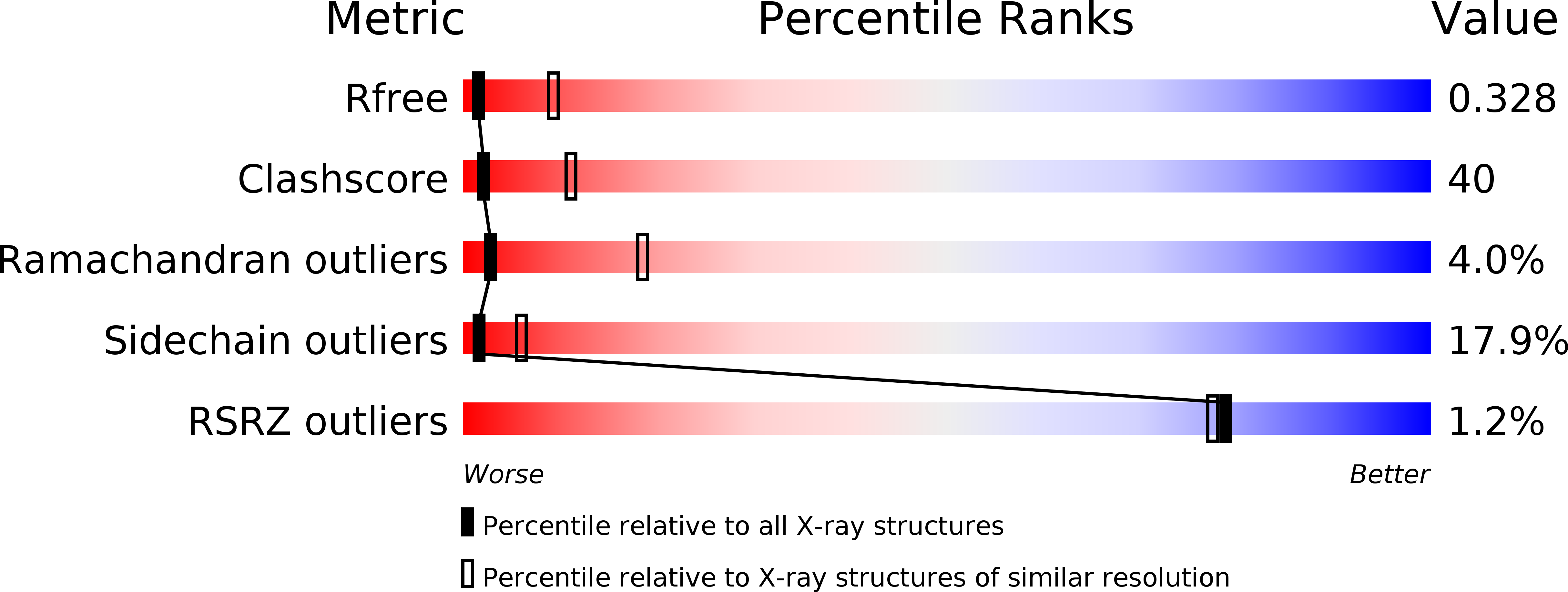Glycyl-tRNA synthetase uses a negatively charged pit for specific recognition and activation of glycine.
Arnez, J.G., Dock-Bregeon, A.C., Moras, D.(1999) J Mol Biol 286: 1449-1459
- PubMed: 10064708
- DOI: https://doi.org/10.1006/jmbi.1999.2562
- Primary Citation of Related Structures:
1B76, 1GGM - PubMed Abstract:
The crystal structures of glycyl-tRNA synthetase (GlyRS) from Thermus thermophilus, a homodimeric class II enzyme, were determined in the enzyme-substrate and enzyme-product states corresponding to the first step of aminoacylation. GlyRS was cocrystallized with glycine and ATP, which were transformed by the enzyme into glycyl-adenylate and thus gave the enzyme-product complex. To trap the enzyme-substrate complex, the enzyme was combined with the glycine analog ethanolamine and ATP. The ligands are bound in fixed orientations in the substrate-binding pocket of the N-terminal active site domain, which contains the classical class II aminoacyl-tRNA synthetase (aaRS) fold. Since glycine does not possess a side-chain, much of the specificity of the enzyme is directed toward excluding any additional atoms beyond the alpha-carbon atom. Several carboxylate residues of GlyRS line the glycine binding pocket; two of them interact directly with the alpha-ammonium group. In addition, the enzyme utilizes the acidic character of the pro-L alpha-hydrogen atom by contacting it via a glutamate carboxylic oxygen atom. A guanidino eta-nitrogen atom of the class II aaRS-conserved motif 2 arginine interacts with the substrate carbonyl oxygen atom. These features serve to attract the small amino acid substrate into the active site and to position it in the correct orientation. GlyRS uses class II-conserved residues to interact with the ATP and the adenosine-phosphate moiety of glycyl-adenylate. On the basis of this similarity, we propose that GlyRS utilizes the same general mechanism as that employed by other class II aminoacyl-tRNA synthetases.
Organizational Affiliation:
Laboratoire de Biologie Structurale, Institut de Génétique et de Biologie Moléculaire et Cellulaire, CNRS/INSERM/ULP, Illkirch Cedex, 67404, France.















